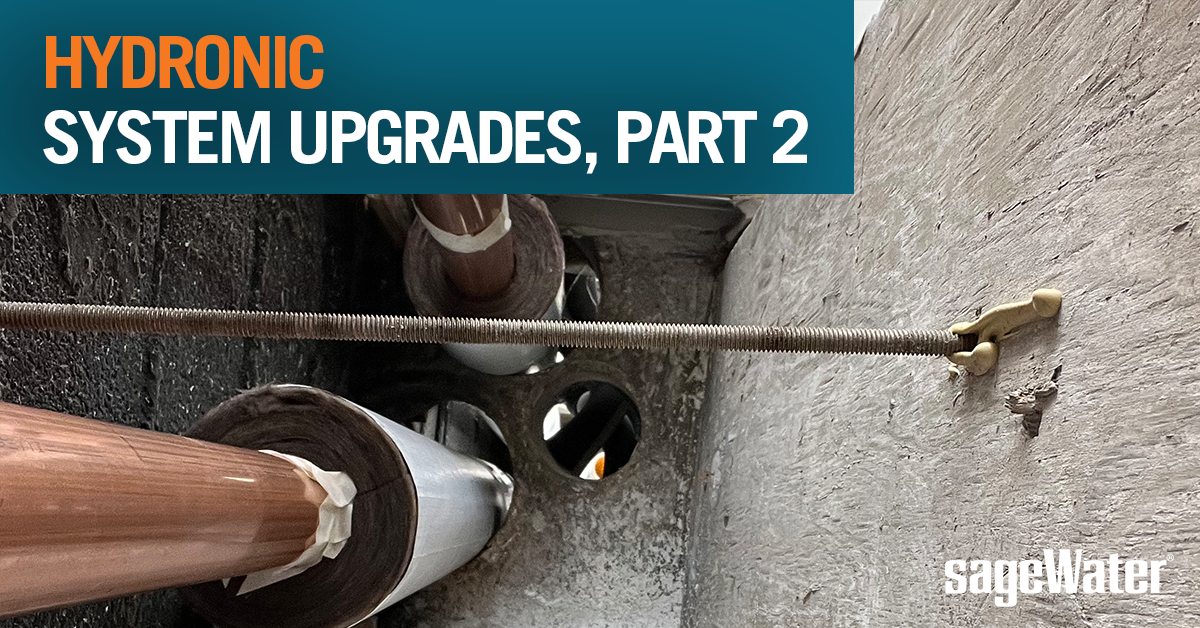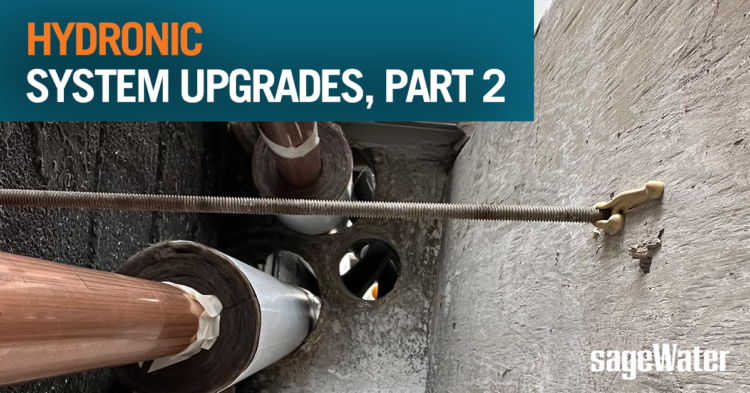
Hydronic Upgrades Part 2: The Advantages of Water Source Heat Pump Systems
From the 1960s through the 1980s, two-pipe hydronic heating and cooling systems were the standard in new construction for high-rise multifamily climate control. If you’ve ever lived in or managed one of these communities, you know they aren’t aging well.
For example, we explained in a previous blog post that these older hydronic systems take a lot of energy to operate, they’re starting to leak, and they’re out of step with resident expectations for four season climate control in their units. Taken together, the issues with these outdated systems are a recipe for declining property values and increasing operational costs.
So, if you’re the owner or manager of a mid- to high-rise apartment or condominium building with a two-pipe hydronic system that’s at the end of its useful life, what options do you have?
Rather than a like-in-kind replacement, many of our clients have improved property values and enhanced their residents’ quality of life by upgrading to water source heat pump (WSHP) systems. Read on to understand the differences between a water source heat pump and a two-pipe hydronic system to see if an upgrade might be right for your community.
The challenges of two-pipe hydronic systems
How they work. As the name states, “two-pipe” hydronic systems have two pipes. One is called “The Supply” because it supplies water that runs through the building to fan coil units (FCUs) in each residence or common space that is heated and cooled. The FCUs blow air across a coil that contains the temperature-controlled water from the supply pipe. The space is heated when the coil contains hot water and cooled when the coil contains chilled water.
The second pipe, called “The Return,” takes the tepid water that exits the coils back to the boiler or chiller, heats or cools it, and recirculates it through the system. Building engineers often refer to these as “closed loop” systems because the water never leaves the pipe, it just circulates over and over again.
These systems require a large “central plant”, which is the very reason many buildings have a boiler room. Typically, the boiler and a chiller sit in the basement and are accompanied by large pumps to move the water vertically, through riser piping, up through the building and to the FCUs in each unit.
The limitations. While cutting edge in their day, these systems have become expensive to operate and maintain. Arguably one of the biggest issues that affects both building efficiency and resident satisfaction is that temperature regulation is done centrally. That means the building can only supply heat or air conditioning at one time, taking away residents’ ability to create a comfortable climate.
Read more about these limitations in the sidebar named Old School Problems.
Enter the Water Source Heat Pump (WSHP) System
Anyone who has lived in a single-family home built after the 1960s is likely familiar with a heat pump. It’s a square or cylindrical-shaped unit that sits outside the house and is connected to a centralized blower and duct system. A fan in the heat pump unit pulls air across the coil (which is circulating refrigerant instead of water). A condenser cools the refrigerant for air conditioning and a blower inside the house pushes air over the conditioned coil and through the ducts—hence the term “central AC.” Using the same equipment, these systems can be reversed to provide heating in colder months, making them an efficient and eco-friendly choice for single-family homes.
Of course, older high-rise buildings can’t usually retrofit their communities with central AC systems like this, primarily because it’s challenging to find the physical space for the ducting infrastructure. That’s why a WSHP system is an excellent alternative—essentially a hybrid approach that allows communities to upgrade their old two-pipe systems to a more efficient and better controlled solution.
How they work. A WSHP employs a small heat pump in a console unit that can fit in the same space as a pre-existing fan coil unit in each residence. In fact, the WSHP uses the same two-pipe style system as the old FCU so you’ll still connect a Supply and Return pipe to the console.
Unlike the outside heat pump that you find in a single-family home, which blows air across the refrigerant-filled coil, a WSHP passes water over the refrigerant-filled coil. The refrigerant in the coil either absorbs heat from the water so that the pump heats the space or else transfers heat back into the water so that the pump cools the space.
The advantages. WSHP systems are far more effective and energy efficient than pre-existing hydronic systems. In our experience, we’ve seen 10% – 25% annual energy cost savings across communities that make the switch! One reason is that the refrigerant maintains temperature longer and absorbs and dissipates heat more efficiently than water. That means water temperature varies less than in a two-pipe hydronic system, which means the localized heat pumps and central plant boiler pumps don’t work as hard. You can significantly downsize your central boiler plant and completely decommission and remove your maintenance-heavy chiller.
In addition, circulating more stable temperature water results in less wear and tear on the pipes and central plant pumps. The systems last longer, are less prone to maintenance issues and early failure, and are far easier to live with.
Of course, residents also gain four season control of the climate in their residences, which helps owners better retain tenants at market-rate rents and improves property value.
Finally, because the WSHP consoles are similar in size to FCUs and connect to the same two-pipe style piping system, you can complete the upgrade without major reconfiguration in your building.
Go deeper on the upside in the sidebar named The Benefits of a WSHP.
Making A Change
When you are starting to face challenges with your old two-pipe hydronic system, it’s important to consider all your options. Modernizing your system with a highly effective and efficient water source heat pump system could bring big value to your community. For apartments, it means improved resident satisfaction and the option to increase rents to more competitive market rates as a result of enhanced amenities. For condominium communities, it creates instant value for property owners.
To explore alternatives to your current mechanical systems, start the process with a design-build piping renovation specialist like SageWater. We can help you model the cost-benefit scenario to see if a solution like WSHPs makes sense for your community.


